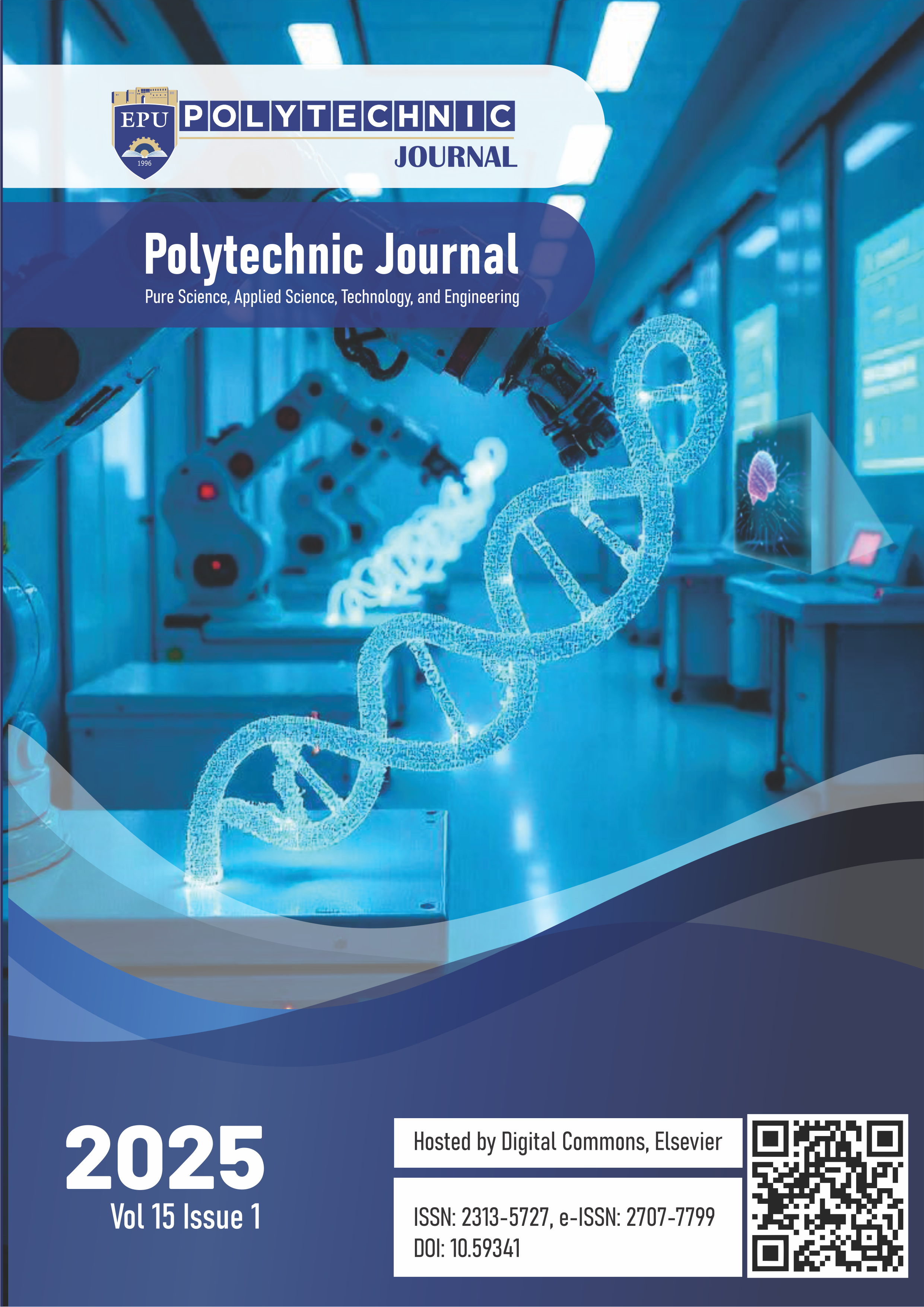Silver Nanoparticle Synthesis Using Bay Leaf Extract (Syzygium polyanthum) and Antibacterial Effectiveness Testing Against Staphylococcus aureus and Escherichia coli Bacteria
Keywords:
AgNPs, Bay leaf (Syzygium polyanthum), Green synthesi, Staphylococcus aureu, Escherichia coliAbstract
The synthesis of silver nanoparticles (AgNPs) using bay leaf extract (Syzygium polyanthum) and their testing against
bacteria aims to evaluate the antibacterial effectiveness on two types of bacteria, namely Staphylococcus aureus (S.
aureus) and Escherichia coli (E. coli). The synthesis method used is environmentally friendly, with bay leaves serving as a
reducing agent. The synthesis process was carried out by mixing silver nitrate (AgNO₃) solution with bay leaf extract at
concentrations of 2 mM and 3 mM in a ratio of 1:30 and 1:40 between AgNO₃ and bay leaf extract. The use of bay leaf
extract to create silver nanoparticles (AgNPs) was verified by a yellowish-brown color shift. UV-Vis spectrophotometry
revealed that the absorbance was highest between 435 and 442 nm. Increased absorbance on day 7 compared to day 1
indicated better nanoparticle production and stability throughout time. At doses of 3 mM AgNO₃, antibacterial activity
tests revealed greater inhibition zones; E. coli showed 12.7 ± 0.4 mm and S. aureus showed 15.4 ± 0.6 mm. Inhibition
zones at two mM were 9.3 ± 0.3 mm for E. coli and 11.2 ± 0.5 mm for S. aureus. These findings demonstrate the potential
of bay leaf extract as an environmentally acceptable ingredient for nanoparticle production and antibacterial applications by confirming the increased susceptibility of S. aureus to AgNPs. The antibacterial test using the disk diffusion
method showed that silver nanoparticles have a significant inhibitory effect on the growth of both bacteria. A larger
inhibition zone is formed at a concentration of AgNO₃ of 3 mM, with S. aureus being more sensitive to changes in
concentration compared to E. coli. This result shows the potential of bay leaf extract as a natural and environmentally
friendly antibacterial agent.

